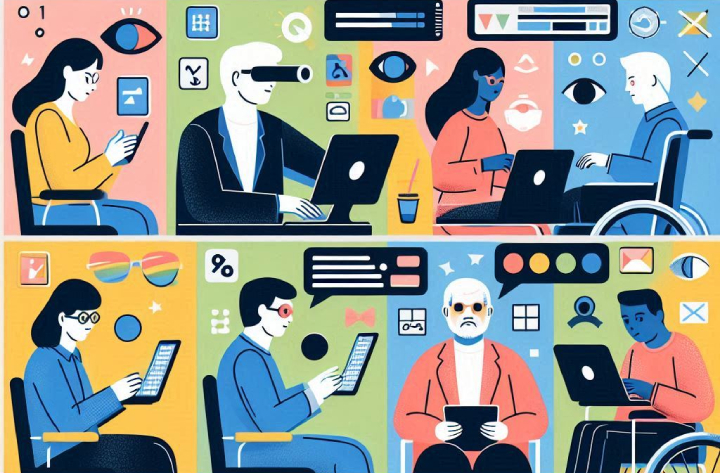Creating an accessible website means striking the right balance between design and inclusivity. With more than 1 billion people around the world living with disabilities, your website’s prospects and usefulness could be held severely back by uninclusive design. Following the specifications of the Americans with Disabilities Act (ADA) and the Web Content Accessibility Guidelines (WCAG) is one thing but there’s plenty more you can do to make sure that your website’s design is as accessible as it is practical. Here’s a look at ten such factors to consider.
Alt text for images
Images can be a crucial part of your layout, but for those with visual impairments, they can pose a big challenge. That’s the reason why adding alternative text (alt text) to your images is an important factor. Its presence ensures that screen reader software can easily convey the contents of the images to the visually impaired. Do make sure to keep this Alt text descriptive yet short, so that it stays relevant to the image’s purpose. And just in case your images are purely for aesthetic purposes, it’s best not to have any Alt text to avoid unnecessary confusion.
Keyboard accessibility
Those with motor disabilities often rely on keyboard input rather using the mouse. It’s hence always advisable to keep all the functions of your website accessible using the keyboard alone. Stuff like menus, links, and form must be kept navigable using the tab, enter, and arrow keys in order to ensure accessible website design.
Colour contrast and readability
Meeting contrast and readability standards is necessary for making sure that all the text on your website is easily readable, especially for people with visual impairments, colour blindness, or low vision. There are various tools online that help you measure the contrast ratio of your text and its background. As per the guidelines of the WCAG, a contrast ratio of at least 4.5:1 for regular text and 3:1 for larger text is recommended.
Descriptive headings
Here’s one feature that helps not just your website’s accessibility but also its SEO ranking. Having headers like H1, H2, and H3 complementing the content of your write-ups can accurately convey the structure of your webpage to screen readers. This way, those who are blind or have low vision can easily comprehend what is written.
Text resizing and zoom
Those with visual impairments use text resizing or browser zoom functions to comfortably read content. It’s hence always advised that your website must allow the resizing of text up to 200 percent without messing the webpage up. And its design should be responsive enough to ensure that when zoomed in, the content remains legible and doesn’t break or overlap.
Use skip navigation links
Again, this is a feature that best serves those using screen readers. In case you’re unaware, skip navigation links are those that allow users to bypass repetitive content like navigation menus. This way, they can go directly to the main content of the page, significantly improving the user experience. This is an often overlooked yet extremely important accessibility feature.
Mobile-friendly design
With the makers of Android and iOS including a ton of accessibility features in their software, mobile devices have become the tools of choice for those with disabilities. So it’s essential that your site is not only mobile-friendly but also responsive. You can scrutinise aspects like touch target size to give a better navigation experience. Moreover, you can even ensure that all mobile elements are accessible via keyboard navigation.
Video and audio content
Multimedia content, especially in the form of videos enhances the user experience a great deal. But there’s no denying that it excludes those with disabilities like deafness and visual or hearing impairments. It’s hence advisable to provide captions for videos and transcripts for audio files wherever possible. And for those who are blind, one can provide descriptive audio or an accessible transcript describing the visual elements of a video.
Accessible forms
While forms can be an essential part of your website for gathering user information, they can be quite difficult for people with disabilities to navigate. You can make that job easier for them by making sure that the fields have clear labels that are associated with their corresponding input fields. You can also ensure that error messages are descriptive and provide guidance on how to fix them.
Consistent and predictable navigation
A well-organized, predictable navigation structure is crucial for making your website accessible. Users with cognitive disabilities benefit from a consistent and logical layout. Make sure that navigation menus are simple to comprehend and consistently positioned on all pages. Opt for straightforward, concise labels, limit the depth of nested links, and provide users with an easy way to return to the homepage or key areas of the site from any location.
Conclusion
Accessibility is an essential part of modern web design that serves the diverse needs of all users. By focusing on these key factors, you can easily create a website that’s both functional and inclusive.



1 Comment
This article will assist the internet people for building up new weblog or even a
weblog from start to end.